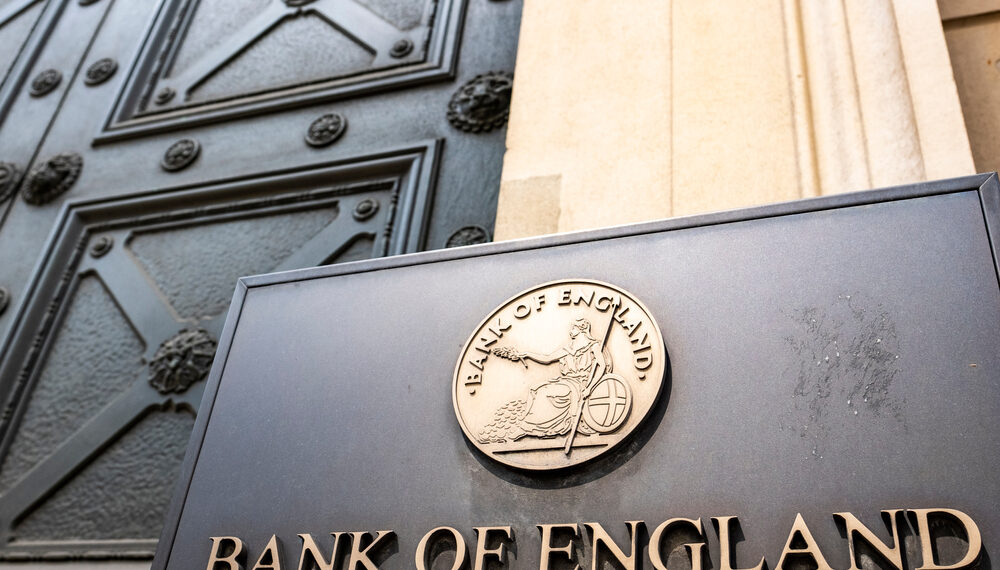
FMID Payments Policy Team
Bank of England
20 Moorgate
London
EC2R 6DA
Re: Regulatory regime for systemic payment systems using stablecoins and related service providers: discussion paper
The Crypto Council for Innovation (“CCI”), a global alliance of industry leaders focussing on digital assets, appreciates the opportunity to provide feedback to the Bank of England (the “Bank”) on “Regulatory regime for systemic payment systems using stablecoins and related service providers: discussion paper” (the “Proposal”).
CCI members span the crypto ecosystem and include some of the leading global companies and investors operating in the industry. CCI members share the goal of encouraging the responsible global regulation of crypto to unlock economic potential, improve lives, foster financial inclusion, protect security, and disrupt illicit activity. Achieving these goals requires informed, evidence-based policy decisions realised through collaborative engagement between regulators and industry. It also requires recognition of the transformative potential of crypto in improving and empowering the lives of global consumers. CCI and its members stand ready and willing to work with the Bank to accomplish these goals and ensure that the most transformative innovations of this generation and the next are best allowed to flourish around the world.
CCI members support and encourage a UK cryptoasset regulatory approach which is robust, proportionate and stimulates innovation. Appropriate regulatory guardrails are crucial to ensure the continued growth of the UK ecosystem, and to realising the Government’s goal of further establishing the UK as a leading global cryptoasset hub.
CCI supports a mixed UK payments ecosystem. We believe that in a mature market like the UK, subject to appropriate regulatory guard rails, there is a role for many different cryptographically-based payment methods, which include central bank issued currencies, privately issued stablecoins and potentially other forms of asset-backed cryptoassets. Privately issued stablecoins can bring about many benefits to UK customers, including enhanced inclusion and access, reduced transaction costs and faster settlement speeds. We are heartened by the statement in the opening foreword of the discussion paper which appears to broadly support our position, stating that “[s]etting out a framework within which this type of innovation can flourish in a sustainable way will ensure that the stability of the financial system is safeguarded and the provision of payments services upon which people depend is safe and reliable.”
Further, CCI welcomes the Bank dedicating proper policy consideration to the important topic of systemic stablecoins, which we hope in due course will become a crucial facet in a thriving digital payments ecosystem in the UK. However, we are concerned that, when these proposals are taken in concert, it appears that a systemic stablecoin in the UK is both undesirable from a regulatory perspective and may struggle to be commercially viable, particularly when compared to other jurisdictions. CCI does not see how such an outcome can be beneficial to consumers, or indeed to the overarching objective of market stability. CCI encourages further holistic consideration of these proposals in light of the UK Government’s ambition to encourage competition and innovation, and to be a global cryptoasset hub.
We also encourage the Bank to take account of the FCA’s stablecoin proposals; it is vital that the two regimes work seamlessly to achieve the same regulatory outcomes. Many stablecoins will grow to be systemic over time rather than being designated as such from launch. In practice, issuers would transition from FCA to the Bank rules and therefore that transition must be smooth and achievable. As the two regimes stand, we do not see how an issuercould practically make that shift, given the very different requirements of the two regimes, which effectively means a wholesale shift in commercial operations, and with little clarity as to when that cliff-edge of systemic designation would happen.
Finally, CCI firmly believes that the UK’s ambitions on cryptoassets can be achieved without compromising the safety and soundness of our financial system, and without lowering protections for consumers. To that end, CCI is supportive of sound regulation which furthers responsible innovation and consumer protection. Against this backdrop, CCI provides our comments to the Proposal.
Backing and capital requirements
In order for the stablecoin market to grow and prosper in the UK, investor confidence is crucial and this can only be delivered by ensuring an appropriate mix of backing assets which can sufficiently maintain the stability of the token in issuance. Further, maintaining reserve assets such that tokenholders can always redeem, irrespective of the circumstances, is also an important facet. As such CCI agrees with the underlying policy rationale behind these proposals.
However, when considering the Bank’s proposals for backing and reserve assets together, we are concerned that the requirements are overly restrictive and not proportionate to the risks.
If the Bank wishes to maintain backing assets 100% in central bank deposits, then we do not see the need for the proposed level of capital buffers. For example, we do not see the policy rationale for maintaining six (6) months of operating expenses or wind down costs given the
additional shortfall reserves held in trust. Systemic stablecoin issuers would not be exposed to the same risks as banks, for example through fractional banking. With backing assets held fully with the central bank, the risks of a run on a stablecoin issuer is significantly less than with commercial banks; yet the policy proposals presented appear to judge there to be enhanced, not even an equal, degree of risk. In our view there is no need for the same level of capital buffers as with banks; this approach would be aligned with the principle of same risk, same regulatory outcome.
Conversely, if the Bank wishes to maintain the proposed capital buffers, we believe it would be proportionate to permit a mix of central bank deposits and high quality liquid assets. For example, the FCA’s stablecoin proposals contemplate Government term market bonds, Certificates of Deposits (CDs), Commercial Papers (CPs), High Rating Corporate bonds and Repurchase Agreements (Repo’s) which we think should also be reviewed by the Bank for systemic stablecoin issuers.
CCI notes the requirement for certain aspects of the systemic stablecoin payment chain to be subject to subsidiarisation requirements. We also note that the Bank goes on to say that backing assets and issuer’s capital would need to be held in the UK. We would welcome further clarity on the interplay between subsidiarisation and what appears to be ring fenced capital. For example, could the UK subsidiary rely on a guarantee from the parent company based elsewhere, particularly if subsidiarisation was only happening for the purposes of systemic stablecoin issuance (rather than the firm having pre-existing operations in the UK).
CCI also welcomes additional clarity on the interplay between systemic stablecoin issuers/ custodians and systemic payment system operators. For example, how would the capital requirements apply if a non-systemic stablecoin were operating on a systemic payment system? Or does the Bank envisage that any stablecoin operating on such a system would itself have to be deemed systemic?
Interest on deposits
CCI notes the requirement that stablecoins must be backed with non-interest bearing central bank deposits, and that neither issuers nor customers can receive interest. This is a considerable shift from current market practices, and will require issuers to fundamentally rethink their commercial models. Our working assumption is therefore that the Bank expects systemic stablecoin issuers to charge transaction fees in the absence of interest payments. Such an approach would not be beneficial to customers, at a time where UK citizens need fast, affordable payment options more than ever. It is important for the UK to further promote innovation and competition by ensuring that consumers have access to various payment options, and that requires creating a level playing field for stablecoin issuers. We also note that one of the stated policy rationales behind this requirement is to disincentivize the use of stablecoins for investment. While we agree this may make holding stablecoins for long periods less likely, it would also disincentivize the use of stablecoins for payments generally, as the price of paying by this mechanism when compared to others would be increased. CCI encourages the Bank to contemplate alternative, less punitive measures which could similarly guard against the use of systemic stablecoins broadly as investments, without having a restrictive effect on customers, innovation and market competition. CCI would welcome the opportunity to be a further resource on this.
Holding limits
CCI notes the proposal to introduce holding limits, at least during a transitional period. We understand the policy rationale behind this approach, and appreciate that these proposals are focussed on systemic stablecoins used within retail payments contexts, rather than for use in wholesale scenarios.
However, we are concerned that the limits being proposed – i.e. mirroring the Digital Pound, are too low. In particular, the lower limit of £5,000 would severely restrict the use of a systemic stablecoin. Such low limits could easily be reached in a matter of weeks for individuals who frequently interact with stablecoins. It also limits the use cases – for example, it is likely that individuals who receive direct deposits would exceed these limits relatively quickly, making it unviable for those receiving income on a less frequent bases (e.g. monthly or quarterly) and potentially constrictive for those receiving frequent but lower values. CCI respectfully encourages the Bank to contemplate higher limits, to ensure a framework which encourages the use of systemic stablecoins in retail payment contexts.
Further, while we appreciate that these proposals are still at an early stage, clarity on exactly how a limit will operate is crucial to ensure trust in the framework. CCI lists various examples for the Bank’s consideration:
● How would holding limits be enforced – if the limit has been reached for a particular account, will payments simply not be transacted, similar to a lack of funds, or will the payment be made/received but a fine imposed, akin to a paid overdraft?
● Who would be responsible for enforcing limits?
● Would limits apply on an individual basis or on a per wallet basis? And how would these requirements interplay with individuals holding multiple wallets, potentially with different providers, for different purposes and containing different kinds of stablecoins and other regulated/unregulated cryptoassets?
● Would limits be realtime, or an average across a day/month for example?
Locational requirements
The Bank proposes that issuers of systemic payment stablecoins should be set up in the UK as subsidiaries in order to carry out business and issuance activities into the UK and with UK-based consumers, both directly and through intermediaries. Given that, up until this point under the FCA regime, no such requirement exists, this would be a big organisational pivot at a relatively cliff edge point.
Requirements for Wallet Providers
The Bank distinguishes between two types of wallets that coinholders can use to access their stablecoins – ‘custodial’ and ‘non-custodial’ or ‘unhosted’ wallets. The Bank further notes that it is exploring the risks associated with ‘non-custodial wallets’.
However, CCI notes that the Bank has already identified ‘unhosted’ wallets as potential money laundering and terrorist financing tools that, in the view of the Bank, may hinder the ability of a stablecoin payment chain to deliver against the FPC’s expectations. As the Bank continues to investigate unhosted wallets – which we would encourage to be termed ‘self-hosted’ to more accurately reflect their material reality – CCI believes that the understanding of such wallets as currently stated is incorrect.
Self-hosted wallets should be understood as technologically neutral – they are software or hardware solutions that enable users to safely, easily, and securely store the cryptographic keys required to unlock access to their digital assets. The choice to self-host is often not based on privacy or anonymity, but is in order to reduce the counterparty risk of centralised intermediaries, where users may lose access to their assets through no personal fault (for example, in the event of a financial crisis), and to provide direct control over the assets themselves. Indeed, it is the pseudoanonymity – not anonymity – of verifiable, public ledgers which enables agencies to trace transactions on public blockchains and identify illicit actors, whilst the implementation of global standards will lead to increased compliance with Anti-Money Laundering requirements. CCI notes that HMT clarified in its response last October, that the provision of self-hosted wallet technology would not, in itself, be captured by the new regulated activity of custody.
Furthermore, as the Bank rightly points out, the UK travel rule and the related guidance from the JMLSG sets out the appropriate ways in which any residual risk from self-hosted wallets can be appropriately managed through a risk-based approach. Self-custody will form an important part of any future use case for payment stablecoins, allowing users to easily access and use their keys to enable payments, and CCI encourages the Bank to work closely with the industry to understand the full picture of self-hosted wallets.
Definition of systemic
CCI is concerned by the lack of clarity regarding what would be considered a systemic stablecoin. While we recognise that designation as systemic is a matter for HM Treasury under Part 5 of the Banking Act, we believe this does not preclude the Bank providing additional guidance. While some stablecoins could be systemic at launch, others could become systemic over time, meaning a clear regulatory threshold is needed as firms transition from FCA regulation, and the differing requirements of that regime, into the Bank’s systemic regime, which will likely require business model adjustments.
In the absence of an objective, transparent threshold, private stablecoin issuers generally will be contemplating their presence in the UK market, for fear of triggering the systemic requirements.
CCI again appreciates the opportunity to provide these comments and your consideration of our recommendations. We would welcome the opportunity to further engage on the comments detailed in this letter and ways to ensure the continued responsible growth of the cryptoasset industry in the UK. We look forward to the next steps in the policy process.
Download the pdf version here.

























